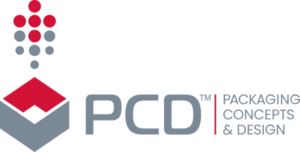DUNNAGE
Hundreds of Materials
Dunnage is a vital piece of the shipping process. Without it, there are few ways to ensure that your shipments will be protected from harm during transit. But with it, manufacturers can operate knowing that their shipments are secure. We consider dunnage to be one of our specialities because we understand the delicate balance between design and cost effectiveness. With the guidance of our expert engineers, we help clients find the right balance between protection and cost.
SEWN INTERNAL DUNNAGE
We use Sewn Internal Dunnage to protect class “A” surface parts like door panels, headliners and other large injection-molded pieces. This returnable sewn bag system conforms to the contours of complex parts resulting in improved packaging density and reduced packaging costs for automotive clients. This system also comes in several material types including Vintex, Tyvek, Nylon, Vu Thru, and Spun Bond and can be installed into pallet boxes, hand held totes and custom metal racks.
PLASTIC CORRUGATED DUNNAGE
We offer Plastic corrugated dunnage in several thicknesses. It can be manufactured to any size. Standard profiles are manufactured from high-density polyethylene and polypropylene plastic and are often employed as a divider for parts that must be separated to avoid scratching and marring. They can also be laminated with various materials for class “A” surface protection. Plastic corrugated dunnage is ideal for harsh environments like those that feature moisture, electrostatic discharge “ESD” and humidity. Plastic corrugated dunnage is also offered from 2mm to 10mm thicknesses. Laminates are offered in XLPE, Polyspun, and Tyvek.
URETHANE DUNNAGE
Urethane dunnage is used in steel racks for the protection of metal products and heavy parts. It is made from cast urethane and foamed urethane. This commodity-type dunnage must be used strategically since it typically has a higher cost. However, there are some incidents when this material will offer a more cost effective design to our customers.
POLYUREA COATED DUNNAGE
Polyurea coated dunnage is typically used in steel racks and standard containers. It can be sprayed directly on steel racks to protect them from scratching. It is a low volume alternative to injection molded dunnage. We have the ability to source polyurea at very competitive prices, allowing our customers to stay competitive.
SOLID SHEET CNC DUNNAGE
Solid sheet CNC dunnage is used to protect metal parts with sharp edges during shipment when plastic corrugated may not be durable enough. We have the ability to assemble cell dividers with the help of this material.
Vacuum form dunnage is used in steel racks and trays that are stacked on pallets. It is especially effective when clients need to support heavy parts. Vacuum form trays are reusable trays that can be customized to any dimension and thickness. They can be constructed with HDPE, ABS, HIPS, PET materials. High-gauge trays are often used to house engine and transmission components, among other heavy/large parts that require improved stability. Lower gauge vacuumed formed trays are used to protect and transport parts that require individual protection.
INJECTION MOLDED DUNNAGE
Steel racks and trays that are stacked on pallets or inside containers most commonly rely on injection-molded dunnage. This material is typically used for heavy parts or in automation due to its ability to hold tight tolerances. It is also used in corrugated export packs from engines and transmissions.
MOLDED PULP
Molded pulp is packaging that is typically made out of recycled paperboard and/or newsprint. It is used as protective packaging, for food service trays, beverage carriers, end caps, trays, plates, bowls and clamshell containers. Pulp products generally have a wall thickness of 3/16″ to 1/2″ and is viewed as an economical solution of expanded polystyrene (EPS), vacuumed formed PET and PVC, corrugate, and foams.
EPP FOAM
EPP foam is used for dunnage in steel racks and on pallets. It is usually used for parts with complicated contours. This product is best for high-volume products. It is also most often expendable with limited returnable options.
MOLDED FOAM
Molded foam is made from flexible polyurethane. It functions as a layer of cushioning for products in transportation. Typically, “high compliance” industries, like healthcare, the military, and retail also benefit from this product. Molded foam shapes and contours to nearly any shape, it is low cost, consistent and has increased upholstering efficiency.
FOAM AND CUSHIONING MATERIALS:
-
Polyethylene: Polyethylene is the most popular polymer and can be molded as well as fabricated. It is often used due to its resistance to moisture and durable nature. It can also be recycled.
-
EVA Polyethylene: EVA is an elastomeric polymer that produces a “rubber-like” material. It is UV radiation resistant, stress-crack resistant and has waterproof properties.
-
VCI Polyethylene and Paper: VCI Packaging, or Volatile Corrosion Inhibitor packaging film, protects metals from corrosion by forming a thin, invisible layer on the surface. This inhibits corrosion or rusting caused by oxygen, water, and other contaminants.
Dunnage can be made from and of the below materials:
- Plastic Injection Molded
- 3D Printed Plastic
- Vac-form
- Foam
- Vinyl
- Urethane
- Spray Urethane
- Corrugated Materials
- Molded Pulp
- Molded Pulp
- Plastic Corrugated
- Sleeve Packs
- Wood
- Anti-static Materials
